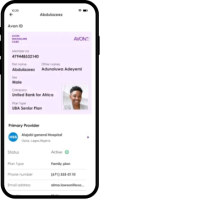
April is International Caesarean Awareness Month, so it’s the perfect time to learn about C-sections in Nigeria.
Did you know that in Nigeria, about 3% of births occur through C-sections? Lately, more mothers are choosing elective caesarean sections so it’s crucial to understand what this choice means, especially during the recovery phase which many find challenging.
Whether you’re expecting or just curious, remember to bookmark this article and share it to spread the knowledge.

What is a C-section?
A C-section is a major surgery where doctors make an incision through seven layers of tissue to safely deliver the baby. This procedure doesn’t involve labour, which means the hormonal signals that kickstart milk production aren’t triggered. New moms might face some initial difficulties with breastfeeding, but it usually improves within five days.
Post-Surgery Recovery
Recovering from a C-section takes time. Initially, you might not feel the urge to urinate due to reduced bladder sensations, which can cause discomfort. It’s important to talk to a doctor or physiotherapist if you experience this after being discharged.
If your C-section was due to conditions like preeclampsia, your hospital stay might be extended to monitor and stabilize your blood pressure.
Six weeks post-surgery, your abdominal fascia’s strength will be about 50% of its original, reaching up to 93% in seven months. During this period, follow your physiotherapist’s advice on safe exercises to strengthen your abdominal wall.
Dealing with Scar Discomfort
It’s common for the scar to feel sore for weeks, and most discomfort eases three months after birth. Some women might feel uneasy about their scars due to various emotional reasons, particularly after emergency C-sections. Physiotherapy can also assist in coping with these feelings.

Sexual Pain and Pelvic Health
About 64% of women report sexual pain within the first year after childbirth. It’s important to assess your pelvic floor function, as it compensates for abdominal weakness, regardless of your delivery method. Ensuring it works correctly is vital for your overall recovery.
When is a C-section necessary?
C-sections can be lifesaving, particularly in high-risk pregnancies with complications like foetal distress, preeclampsia, or breech presentations. They are often the safest delivery method under such circumstances. However, they are major surgeries and come with higher risks compared to vaginal births. In Nigeria, the risk of maternal death is ten times higher with C-sections than with vaginal births.
Some believe that C-sections are a more modern approach compared to vaginal births, but both methods have their place. The priority should always be medical necessity, not personal preference.

Spread the Word
C-sections are crucial but should only be performed when necessary. Help us raise awareness about the safe and appropriate use of C-sections in Nigeria by sharing this information and following us on social media at @avonhmo for daily health updates.
Thank you for reading, and remember, knowledge is the first step to making informed health decisions.



